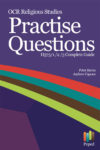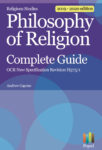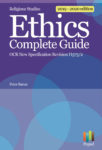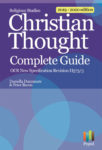STEP 2 Scaffolding
March 27, 2012
 Every moral theory has a starting point and an end point. The bones of the argument I am going to call the scaffolding. Now let’s be clear there are many ways of building that scaffolding, so this is my view of what the scaffolding of natural law might look like. If you want to follow the original sources then go to the Natural Law section of the ethics menu and you’ll find not just the sources, but how academics interpret the original text. This is just a very quick sketch.
Every moral theory has a starting point and an end point. The bones of the argument I am going to call the scaffolding. Now let’s be clear there are many ways of building that scaffolding, so this is my view of what the scaffolding of natural law might look like. If you want to follow the original sources then go to the Natural Law section of the ethics menu and you’ll find not just the sources, but how academics interpret the original text. This is just a very quick sketch.
I think the starting point is the synderesis principle. I say this because Aquinas calls this the first principle of the natural law. This principle is defined thus: all human beings have this natural habit as he calls it to follow the primary precepts, to incline towards doing good and avoiding evil. Synderesis is infallible, it’s immediate and as it were it springs into action whenever we are thinking ethically – it is a power of what Aquinas calls practical reason or phronesis.
Aquinas’ next step is to list some of the things synderesis – this general tendency to pursue the good, will tend to incline towards. These are normally listed in the textbook as five and it’s not a bad way of summarising Aquinas’ view. At this moment we might introduce to our scaffolding an acronym or memory aid. The acronym I have used here is POWER Preservation of Life, Ordered Society, Worship of God, Education and Reproduction. These are dictates of the reason aiming at something good – our benefit, because we are the species human being. They too are unchangeable general precepts of the natural law.
But notice what happens next. When we come to secondary precepts these are “proximate conclusions”. They are not supposed to be absolute. They are judgements of our reason when we apply the precepts to life. So what I have listed here is some conclusions in traditional Catholic moral theology with a question mark quite deliberately attached. Not even all Catholics agree with this, but papal documents like Veritatis Splendor from 1995 try to encourage us to hold the line on this traditional interpretation. You can in other words still be a natural law theorist and thoroughly disagree with this – as the Anglican Church, also following this line of argument, would do on issues such as contraception.
And finally in my scaffolding I have placed eudaimonia – the Aristotelean idea of flourishing, or well-being which Aquinas translates into the latin beatitudo or blessedness. The ultimate end of natural law ethics is a rational principle summed up by the question – what will cause me and society generally to flourish and be the best version of myself I can be?
Now I am sharing this not because this is the only structure we might give to Aquinas’ argument, nor even that it is necessarily the best structure. But technical advice 1) try to work out a structure which you can sketch out in an exam quickly on a piece of paper. Draw your own structure on a piece of A3 paper as a Revision aid then colour it up with quotes, qualifications, key ideas.
Then stick it on your wall and take a can of coke and a wispa bar and admire it, question it, adjust it, contemplate it. I might add these comments for example:
“Aquinas’ is a deontological theory arising from a Greek teleological worldview”. Deontological because there is strong ought here or sense of obligation – it is law or a system of rules to follow, but everything here depends on the telos or end of eudaimonia.”
Or “natural law is not as absolute as sometimes suggested because the way these general precepts work out can vary and we can debate the point rationally with reference to the end of eudaimonia”.
I could even say different followers of the Natural Law perspective might reason very differently about the secondary precepts.






0 Comments